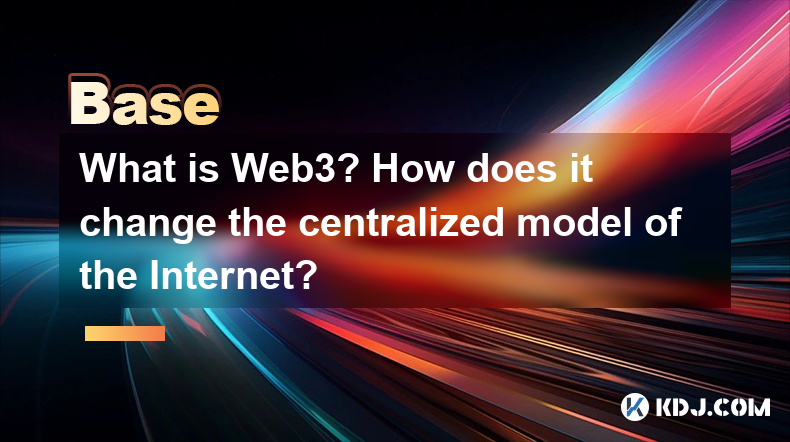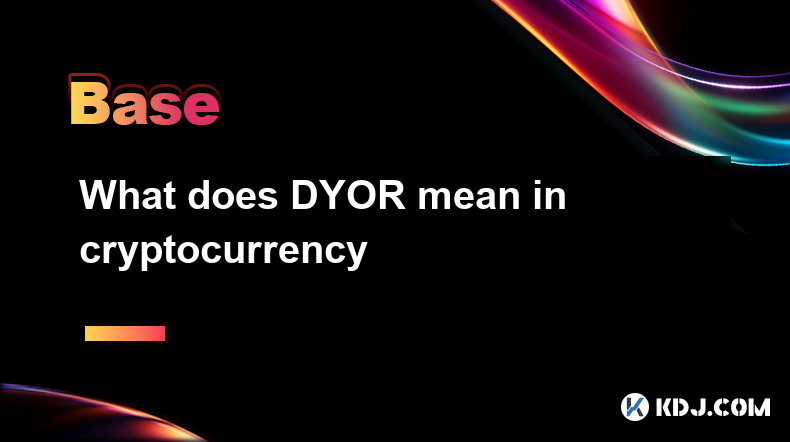-
 Bitcoin
Bitcoin $84,412.2676
-0.67% -
 Ethereum
Ethereum $1,578.6729
-0.92% -
 Tether USDt
Tether USDt $0.9997
-0.03% -
 XRP
XRP $2.0641
-1.56% -
 BNB
BNB $590.2565
1.09% -
 Solana
Solana $133.1528
3.43% -
 USDC
USDC $1.0000
0.01% -
 TRON
TRON $0.2486
-2.49% -
 Dogecoin
Dogecoin $0.1551
-0.16% -
 Cardano
Cardano $0.6195
1.38% -
 UNUS SED LEO
UNUS SED LEO $9.0448
-3.89% -
 Chainlink
Chainlink $12.4389
0.95% -
 Avalanche
Avalanche $19.1160
0.32% -
 Toncoin
Toncoin $2.9801
3.00% -
 Stellar
Stellar $0.2386
1.48% -
 Shiba Inu
Shiba Inu $0.0...01174
-0.95% -
 Sui
Sui $2.1028
0.11% -
 Hedera
Hedera $0.1609
1.18% -
 Bitcoin Cash
Bitcoin Cash $334.5478
3.76% -
 Polkadot
Polkadot $3.6383
2.11% -
 Litecoin
Litecoin $75.0599
-0.04% -
 Hyperliquid
Hyperliquid $16.5153
3.75% -
 Dai
Dai $1.0001
0.01% -
 Bitget Token
Bitget Token $4.3581
0.06% -
 Ethena USDe
Ethena USDe $0.9991
0.00% -
 Pi
Pi $0.6183
-0.05% -
 Monero
Monero $216.0344
-1.40% -
 Uniswap
Uniswap $5.1688
-0.28% -
 OKB
OKB $50.4625
-2.46% -
 Pepe
Pepe $0.0...07178
0.05%
What is Web3? How does it change the centralized model of the Internet?
Web3 aims to decentralize the internet using blockchain, enhancing user control over data and privacy, but faces challenges like scalability and user complexity.
Apr 05, 2025 at 06:01 pm

What is Web3?
Web3 refers to the next generation of the internet, characterized by decentralized technologies and protocols that aim to shift the control of the web from centralized entities to a more distributed and user-centric model. At its core, Web3 leverages blockchain technology, smart contracts, and decentralized applications (dApps) to create a more open, transparent, and secure internet. This shift aims to empower users by giving them more control over their data, identity, and online interactions.
The Centralized Model of the Internet
The current internet, often referred to as Web2, is dominated by centralized platforms and services. Companies like Google, Facebook, and Amazon control vast amounts of user data and govern the rules of engagement on their platforms. This centralized model has led to concerns over privacy, data security, and the monopolistic power of these tech giants. Users often have little control over how their data is used, and they are subject to the whims of these corporations, which can change policies or shut down services at any time.
How Web3 Changes the Centralized Model
Web3 aims to dismantle the centralized model by introducing decentralization at multiple levels. This includes decentralized storage, decentralized identity management, and decentralized finance (DeFi), among others. By using blockchain technology, Web3 ensures that data is not stored in a single location but is distributed across a network of nodes. This makes it much harder for any single entity to control or manipulate the data.
Decentralized Applications (dApps)
A key component of Web3 is the rise of decentralized applications (dApps). Unlike traditional apps that run on centralized servers, dApps operate on blockchain networks. This means that the logic and data of the application are controlled by the network rather than a single company. Users can interact with dApps directly, often without needing to create an account or provide personal information. This not only enhances privacy but also reduces the risk of data breaches.
Decentralized Identity Management
In the current internet, identity management is often controlled by centralized entities. Users must create accounts with various services, each requiring personal information and passwords. Web3 introduces decentralized identity management, where users can control their own identity through self-sovereign identity (SSI) systems. These systems allow users to create and manage their digital identities without relying on third parties. This not only enhances privacy but also reduces the risk of identity theft and fraud.
Decentralized Finance (DeFi)
Decentralized Finance (DeFi) is another significant aspect of Web3 that challenges the centralized financial system. Traditional finance is dominated by banks and financial institutions that control access to financial services. DeFi, on the other hand, uses blockchain technology to create open and accessible financial systems. Users can lend, borrow, trade, and earn interest on their assets without the need for intermediaries. This democratizes access to financial services and reduces the power of centralized financial institutions.
Challenges and Considerations
While Web3 offers many advantages, it also faces several challenges. Scalability remains a significant issue, as many blockchain networks struggle to handle large volumes of transactions efficiently. Additionally, the user experience of many Web3 applications can be complex and daunting for non-technical users. Regulatory uncertainty also poses a challenge, as governments and regulatory bodies grapple with how to oversee decentralized systems.
The Role of Cryptocurrencies
Cryptocurrencies play a crucial role in the Web3 ecosystem. They serve as the native currency of many blockchain networks and are used to facilitate transactions, incentivize network participants, and reward users for contributing resources. The most well-known cryptocurrency, Bitcoin, laid the foundation for the concept of decentralized money. However, other cryptocurrencies like Ethereum have taken this further by enabling smart contracts and dApps, which are central to the Web3 vision.
Interoperability and the Future of Web3
Interoperability is another critical aspect of Web3. As the ecosystem grows, it is essential that different blockchain networks and dApps can communicate and work together seamlessly. Projects like Polkadot and Cosmos are working on creating interoperability protocols that allow different blockchains to interact. This will be crucial for the widespread adoption of Web3, as it will enable users to move seamlessly between different decentralized services.
Frequently Asked Questions
What are the main differences between Web2 and Web3?
The main differences between Web2 and Web3 lie in their structure and control. Web2 is characterized by centralized platforms and services, where companies like Google and Facebook control user data and online interactions. In contrast, Web3 is decentralized, using blockchain technology to distribute control and data across a network of nodes. This shift aims to enhance user privacy, security, and autonomy.
Can Web3 completely replace Web2?
While Web3 offers significant advantages, it is unlikely to completely replace Web2 in the near term. Many aspects of the current internet, such as social media and search engines, are deeply entrenched in centralized models. However, Web3 can coexist with Web2, offering alternative solutions for those who value decentralization and privacy.
How can someone start using Web3 services?
To start using Web3 services, follow these steps:
- Choose a Wallet: Select a cryptocurrency wallet that supports the blockchain network you want to use. Popular options include MetaMask for Ethereum and Trust Wallet for multiple blockchains.
- Fund Your Wallet: Purchase the necessary cryptocurrency and transfer it to your wallet.
- Explore dApps: Visit decentralized application platforms like Uniswap for trading or Aave for lending and borrowing. Connect your wallet to these platforms to start using their services.
- Learn and Engage: Join online communities and forums to learn more about Web3 and stay updated on new developments and opportunities.
What are the security concerns with Web3?
Security is a significant concern in Web3, as the decentralized nature of the technology can introduce new risks. Smart contract vulnerabilities, for example, can lead to hacks and financial losses. Additionally, users must manage their own private keys, which, if lost or stolen, can result in permanent loss of funds. It is crucial for users to educate themselves on best practices for securing their assets and using Web3 services safely.
Disclaimer:info@kdj.com
The information provided is not trading advice. kdj.com does not assume any responsibility for any investments made based on the information provided in this article. Cryptocurrencies are highly volatile and it is highly recommended that you invest with caution after thorough research!
If you believe that the content used on this website infringes your copyright, please contact us immediately (info@kdj.com) and we will delete it promptly.
- Former United States President Donald Trump is likely making a bold move into blockchain gaming
- 2025-04-17 23:15:12
- The TRUMP memecoin is set to unlock over $300 million worth of tokens this Saturday
- 2025-04-17 23:15:12
- Mantra Crypto (OM) Token Just Cratered, Shedding 80% of Its Value and Torching Billions in Market Cap
- 2025-04-17 23:10:12
- Chainlink (LINK) price has been under significant pressure recently, with a notable decline over the past three weeks.
- 2025-04-17 23:10:12
- Pi Network Price Prediction: Will the Pi Token Reach $30 If Banks Adopt It?
- 2025-04-17 23:05:12
- Ultra-rare coins with royal connection could be worth small fortune
- 2025-04-17 23:05:12
Related knowledge

How the Lightning Network improves Bitcoin efficiency
Apr 17,2025 at 08:56pm
The Lightning Network represents a significant advancement in the Bitcoin ecosystem, aiming to address some of the most pressing issues related to transaction speed and cost. By enabling off-chain transactions, the Lightning Network drastically improves Bitcoin's efficiency, allowing for faster and cheaper transactions. This article will explore how the...

Analysis of the KYC process of cryptocurrency exchanges
Apr 17,2025 at 05:07pm
The Know Your Customer (KYC) process is a critical component in the operations of cryptocurrency exchanges. It serves as a regulatory measure to prevent fraud, money laundering, and other illicit activities. KYC procedures are designed to verify the identity of users and ensure compliance with financial regulations. This article delves into the various ...

What does Floor Price mean in the NFT market
Apr 17,2025 at 12:42am
The term Floor Price is a critical concept within the NFT (Non-Fungible Token) market, serving as a key indicator for both buyers and sellers. In essence, the floor price represents the lowest price at which an NFT from a particular collection is currently listed for sale on a marketplace. This price point is crucial for understanding the perceived valu...

How to understand the TVL indicator in DeFi projects
Apr 17,2025 at 03:28pm
Understanding the TVL indicator in DeFi projects is crucial for investors and enthusiasts looking to gauge the health and popularity of decentralized finance platforms. TVL, or Total Value Locked, represents the total amount of assets that are currently staked or locked in a DeFi protocol. This metric serves as a barometer for the trust and interest tha...

What does DYOR mean in cryptocurrency
Apr 17,2025 at 03:00pm
DYOR, or 'Do Your Own Research,' is a crucial mantra in the cryptocurrency community. It emphasizes the importance of individuals conducting their own thorough investigations before making any investment decisions. In the fast-paced and often volatile world of cryptocurrencies, relying solely on others' advice or the hype surrounding a particular coin c...

What is Alpha? How to find Alpha opportunities?
Apr 16,2025 at 12:42pm
What is Alpha?Alpha is a term widely used in the financial world, including the cryptocurrency market, to describe the ability of an investment to outperform a benchmark. In the context of cryptocurrencies, alpha refers to the excess return an investor achieves over the market's average return. For example, if the overall crypto market grows by 10% in a...

How the Lightning Network improves Bitcoin efficiency
Apr 17,2025 at 08:56pm
The Lightning Network represents a significant advancement in the Bitcoin ecosystem, aiming to address some of the most pressing issues related to transaction speed and cost. By enabling off-chain transactions, the Lightning Network drastically improves Bitcoin's efficiency, allowing for faster and cheaper transactions. This article will explore how the...

Analysis of the KYC process of cryptocurrency exchanges
Apr 17,2025 at 05:07pm
The Know Your Customer (KYC) process is a critical component in the operations of cryptocurrency exchanges. It serves as a regulatory measure to prevent fraud, money laundering, and other illicit activities. KYC procedures are designed to verify the identity of users and ensure compliance with financial regulations. This article delves into the various ...

What does Floor Price mean in the NFT market
Apr 17,2025 at 12:42am
The term Floor Price is a critical concept within the NFT (Non-Fungible Token) market, serving as a key indicator for both buyers and sellers. In essence, the floor price represents the lowest price at which an NFT from a particular collection is currently listed for sale on a marketplace. This price point is crucial for understanding the perceived valu...

How to understand the TVL indicator in DeFi projects
Apr 17,2025 at 03:28pm
Understanding the TVL indicator in DeFi projects is crucial for investors and enthusiasts looking to gauge the health and popularity of decentralized finance platforms. TVL, or Total Value Locked, represents the total amount of assets that are currently staked or locked in a DeFi protocol. This metric serves as a barometer for the trust and interest tha...

What does DYOR mean in cryptocurrency
Apr 17,2025 at 03:00pm
DYOR, or 'Do Your Own Research,' is a crucial mantra in the cryptocurrency community. It emphasizes the importance of individuals conducting their own thorough investigations before making any investment decisions. In the fast-paced and often volatile world of cryptocurrencies, relying solely on others' advice or the hype surrounding a particular coin c...

What is Alpha? How to find Alpha opportunities?
Apr 16,2025 at 12:42pm
What is Alpha?Alpha is a term widely used in the financial world, including the cryptocurrency market, to describe the ability of an investment to outperform a benchmark. In the context of cryptocurrencies, alpha refers to the excess return an investor achieves over the market's average return. For example, if the overall crypto market grows by 10% in a...
See all articles























































































